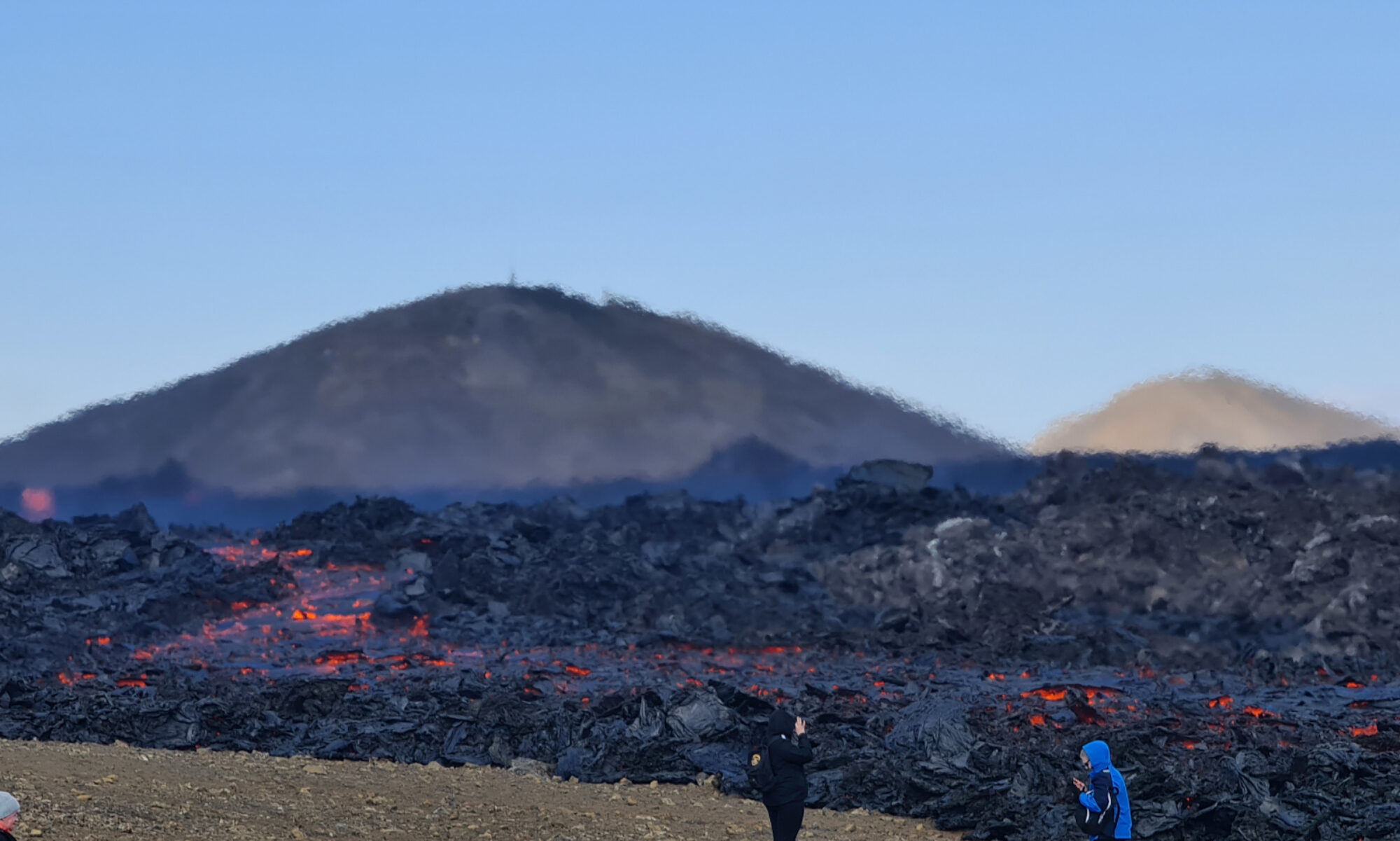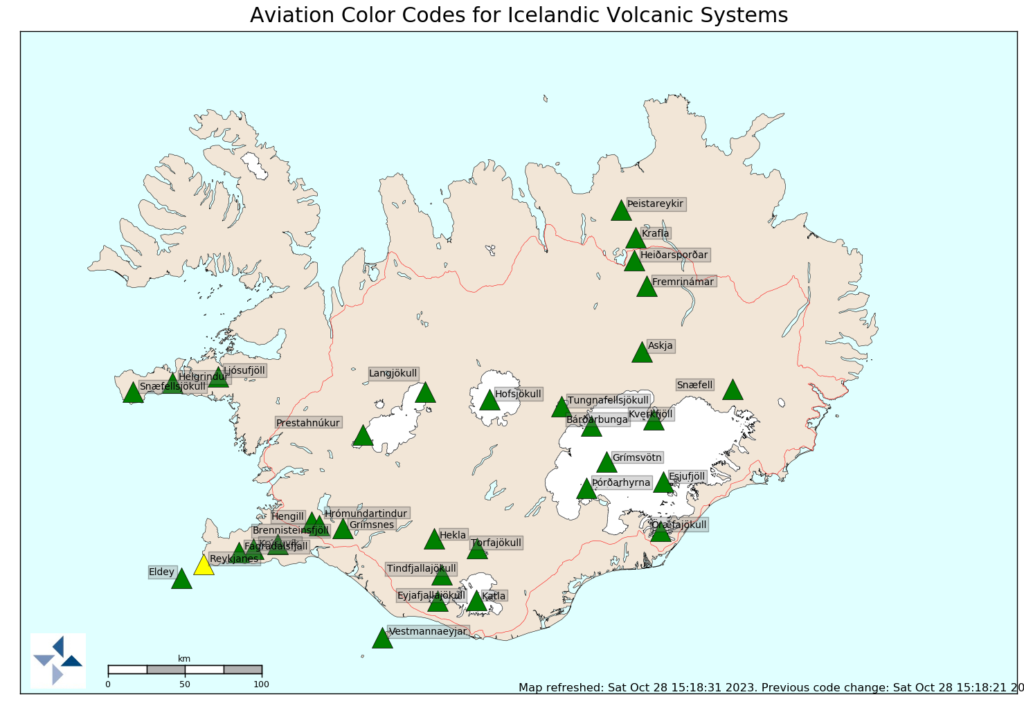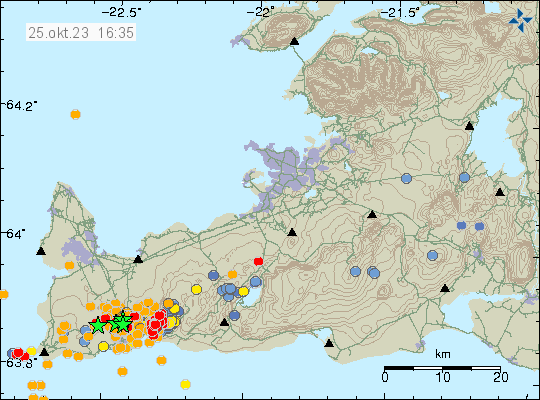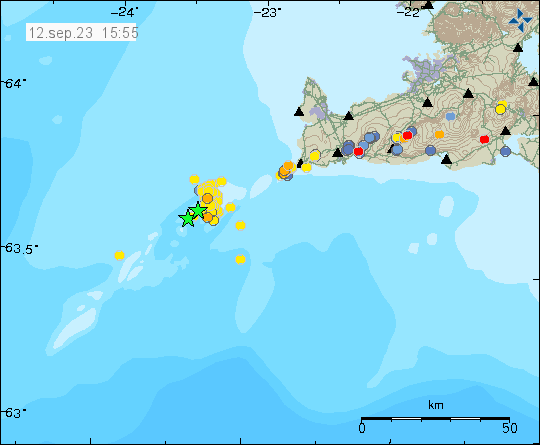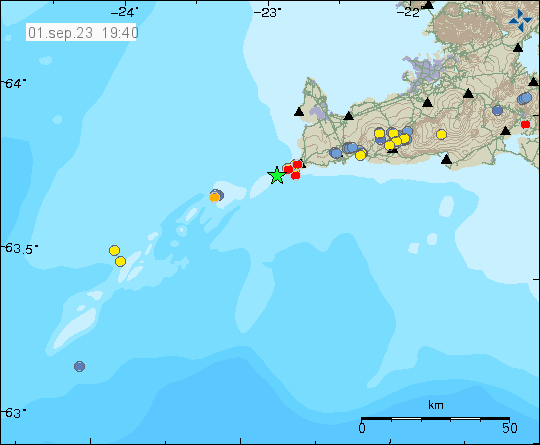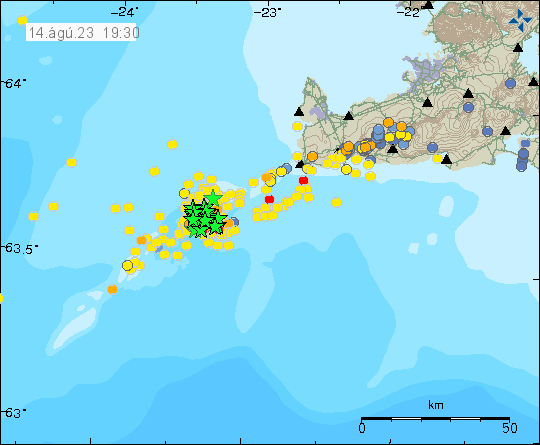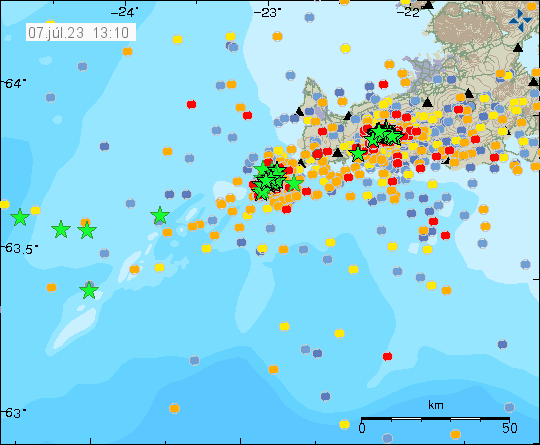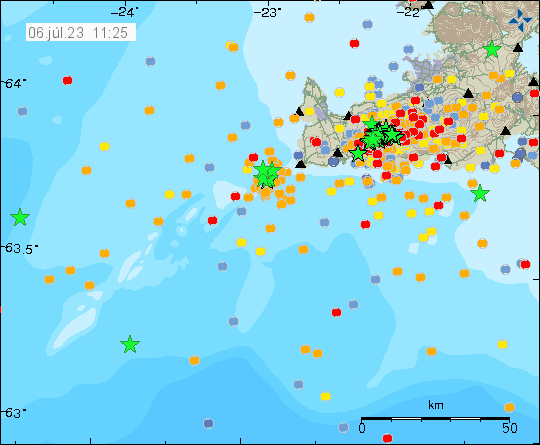Today (31. October 2023) at around 08:00 UTC an magma movement was detected by Icelandic Met Office. This started an earthquake swarm that had a largest earthquake with magnitude of Mw3,7. The magma seems to be at depth of 1,5 km where it is the shallowest. Few days ago, that magma was at depth of 5 to 8 km. This change is rather quick movement of magma, that suggests higher pressure compared the magma that erupted in Fagradalsfjall volcano. This might result in a larger eruption when it happens. The inflation at Fagradalsfjall volcano, south part of it has not lowered. The only thing that has happened there is that earthquake activity has dropped to almost nothing. Earthquake activity has moved to western part of Fagradalsfjall volcano. Eruption also happening in Fagradalsfjall volcano should not be ruled out, but the events close to Þorbjörn mountain might delay the progress of that magma.
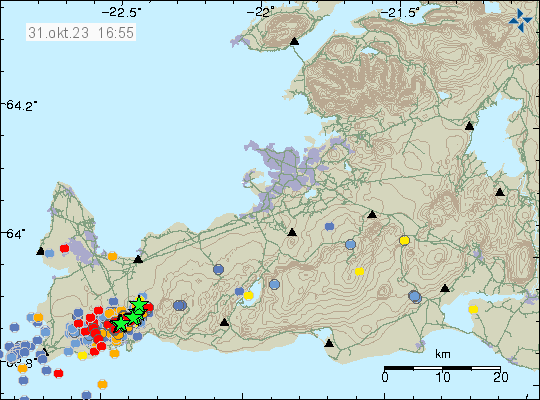
It is difficult to know what is going to happen next. But an eruption is highly likely, when and where is almost impossible to know even if GPS data gives good clues on where it might happen. This situation is complex and it is uncertain what is going to happen next with this activity in Reykjanes volcano and Fagradalsfjall volcano.
I’ll post information soon as I know something. A list of web cameras of Icelandic volcanoes can be found on the YouTube page that I set up a while ago.
